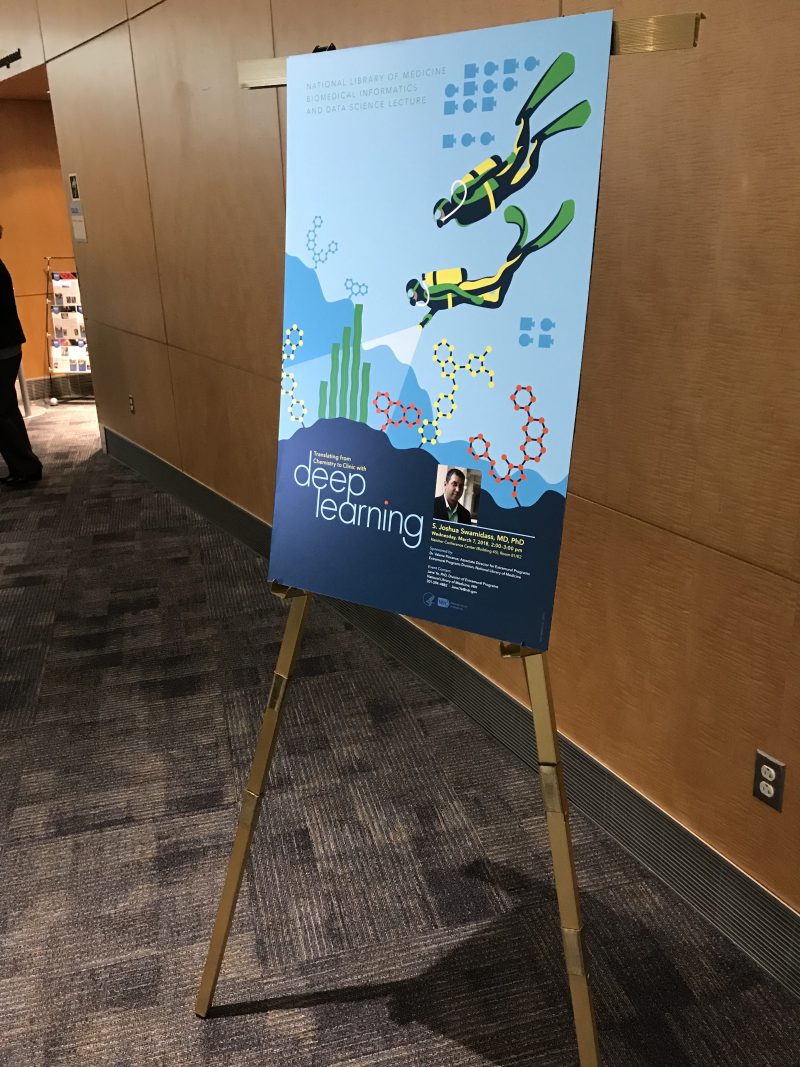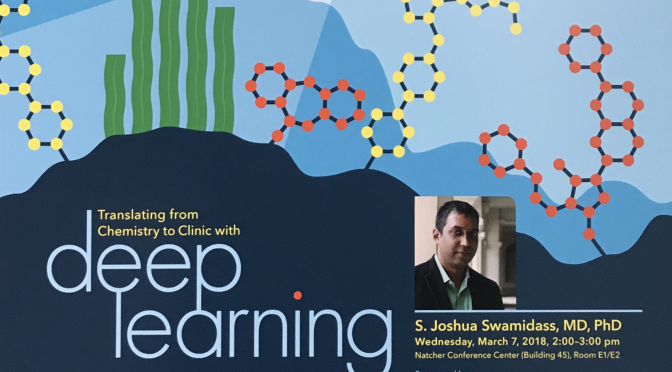This lecture was recorded in March 2018, and can be viewed online at the NIH website. Here, I give an overview of the work done in our group (as of March 2018), using deep learning to model bioactivation: the metabolism and reactivity of drugs. Mediated by computation, a new conversation between basic and clinical science is possible that can uncover the mechanisms underlying drug toxicity in patients.
Translating from Chemistry to Clinic with Deep Learning:
Modeling the Metabolism and Subsequent Reactivity of Drugs
S. Joshua Swamidass MD PhD, https://swami.wustl.edu.
Assistant Professor, Laboratory and Genomic Medicine, WUSTL
Faculty Lead, Translational Bioinformatics, Institute for Informatics, WUSTL
Many medicines become toxic only after bioactivation by metabolizing enzymes. Often, metabolic enzymes transformed them into chemically reactive species, which subsequently conjugate to proteins and cause adverse events. For example, carbamazepine is epoxidized by P450 enzymes in the liver, but then conjugates to proteins, causing Steven Johnsons Syndrome in some patients. The most difficult to predict drug reactions, idiosyncratic adverse drug reactions (IADRs), often depend on bioactivation. Our group has been using deep learning to model the metabolism of diverse chemicals, and the subsequent reactivity of their metabolites. Deep learning systematically summarizes the information from thousands of publications into quantitative models of bioactivation, modeling precisely how medicines are modified by metabolic enzymes. These models are giving deeper understanding of why some drugs become toxic, and others do not. At the same time, deep learning can be used to understand drug toxicity as it arises in clinical data, and why some patients are affected, but not others. A conversation between the basic and clinical sciences is now possible, where patient outcomes can be understood in light of bioactivation mechanisms, and these mechanisms can explain why some patients are susceptible to drug toxicity, and others are not. Funded by R01LM012482 and R01LM012222.



You must log in to post a comment.